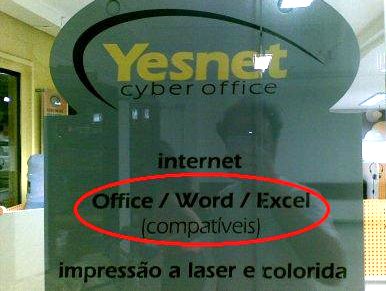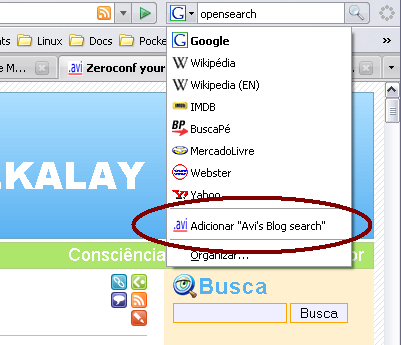The fundamental question, lack of tangible answer and the probable consequences
This is a translation for a blog post by Jomar Silva, head of the ODF Alliance Chapter Brazil.
In the coming days I’ll celebrate (or regret) one year working with OpenXML in ISO, and I must admit that the more time goes by I’m more far of finding a plausible answer to the most fundamental (and forgotten) question: “Why two standards ?”
The claim of proponents is the legacy support, which is not technically proven in more than 6 thousand pages of specification. It is also not proven the claim that the OpenXML fulfills the specific users needs… Did any of them read the specification of ODF (ISO / IEC 26300)?
The commercial reasons for the existence of this second standard is more than obvious and have been widely commented worldwide, but doesn’t it work as a warning that something is going wrong? Does the initiatives of international standardization are just moved by commercial interests of six guys and the argument that standardization helps to reduce artificial barriers to free trade is nothing more than cheap and utopian ideology?
Would the ISO 9000 be what it is for Quality worldwide if its opponents had proposed and made whatever was needed to ensure many different standards of quality, addressing different user needs? Will ISO accept in the coming years a proposal for more flexible quality standard, which is compatible with the legacy of disorganization that some companies still have today? Does the lack of ability of a small company to have and maintain decently a quality system based on the ISO 9000 configures “specific users needs” and therefore demand a new international standard?
Let us move to environmental issues? Do small and medium businesses have conditions and structure to maintain an ISO 14000 certificate correctly? Do the allegations of China on emissions of carbon (by the way, supported by USA position) configures the existence of the specific user needs in order to prepare a new environmental standard?
The precedent that OpenXML brought to international standardization, in my point of view, is the worst possible because based on the existence of two standards for editable documents, or at least the ability to mobilize the world and spend huge amounts of money in this discussion, will not allow the JTC1, the ISO, IEC and anyone else to refuse the discussions of new rules or alternatives standards for any economic sector. This really worries me, because all the efforts of standardization achieved in recent decades can go up in the garbage can in a short time and the worst is that everyone seems not to see it is happening. Want to see an example of the mess… I give one of the bests…
The PDF format is an ISO standard, the PDF/A which is the ISO 19005-1:2005, published in October 2005. It was developed based on a subset of the specification PDF 1.4 of Adobe. Several countries and organizations around the world have already adopted this standard as the default for non-editable documents.
Microsoft has released Windows Vista along with a new standard for non-editable electronic documents, called XPS (XML Paper Specification), which uses the same packaging concepts of OpenXML (OpenPackaging Convention) to represent non-editable documents. Who guess where XPS is standardized as another “Open Standard” wins a gift… ECMA… A lot of creativity is not needed to understand that this standard will also be submitted to ISO through a FasTrack in the coming months, just following the OpenXML opened path to that.
Adobe has realized this and has already expressed itself. A press release from the company itself, from January of this year already announced the delivery of version 1.7 of the standard to ISO. This proposal has followed their natural path and this week the vote of the standard in ISO has finished. According to the expectation of a blog from Adobe, published yesterday, the standard was adopted. My personal opinion is that this approval is very important, because now PDF becomes a full international standard, not a subset as was the PDF/A.
So I warn all involved and concerned to allocate a part of their budget for 2008 to discuss the FasTrack of XPS, because I think it will be inevitable.
I wonder what will be the other standards that will be run over (or who tries to trample) within ISO. How much money will be spend in this decade to learn this lesson?
What makes me more disappointed is to see that all these things can put ISO in a delicate position in the international standardization scene. The mess ISO is letting to happen in its own rules may cause that to be an ISO standard or a John Doe’s standard will have same value (at least to IT industry). I think this whole mess threatens the reputation that this entity has, which for me has always been synonymous with seriousness and responsibility.
The existence of unique standards, built through community is what today allows me to access the internet and write this article and that allows you to read it here from anywhere, using any browser and any operating system. This is what allows us to buy any CD with music and to use in any CD player (from $50 thousand to $1.00). This is the world created by international standards but looks like its not good for everybody.
Commodity market competition is for serious companies, competent and committed with the differentiation to their customers… It is not for anyone, regardless of their size or achievements in the past…
To relieve a little bit the post, in the last weekend I decided to play my acoustic guitar and ended up playing a song that reminded me a lot about all that I wrote here. I think it encouraged me to write this article.
The song is “Anarchy in UK” by the Sex Pistols and when I played in the weekend, just switched the UK to ISO and things made sense… Perhaps this is the answer to the question that doesn’t have an answer…
The part that I found most interesting is:
Anarchy at the ISO
It’s coming sometime and maybe.
I give a wrong time, stop a traffic line.
Your future dream is a shopping scheme.
That is what they want… Anarchy at ISO!








